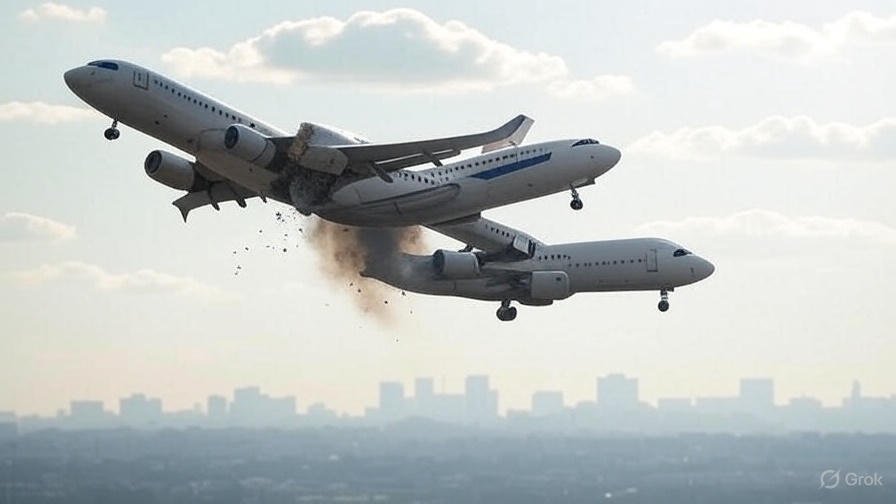On July 25, 2025, passengers aboard Southwest Airlines Flight 1496 from Hollywood Burbank Airport to Las Vegas experienced a heart-stopping moment when their plane took a dramatic dive to avoid a potential midair collision. The incident, which left two flight attendants injured and passengers shaken, has sparked renewed conversations about aviation safety. Here’s what happened, why it matters, and what it means for the future of air travel.
Table of Contents
A Sudden Plunge Over Burbank
Just six minutes after takeoff, Southwest Flight 1496, a Boeing 737, was climbing through 14,100 feet when the pilot received two onboard traffic alerts from the plane’s Traffic Collision Alert and Avoidance System (TCAS). The system detected a nearby Hawker Hunter aircraft at 14,653 feet, prompting the pilot to execute an emergency maneuver. The plane dove 475 feet to 13,625 feet in mere seconds, an experience passenger Steve Ulasewicz described to ABC News as a “significant drop” that felt like a “free fall” lasting 8 to 10 seconds. Comedian Jimmy Dore, who was on board, posted on X, “Myself & plenty of people flew out of their seats & bumped heads on ceiling.” The chaos was palpable, with passengers screaming and one describing it as feeling like Disney’s Tower of Terror ride.
Passenger Panic and Crew Injuries
The sudden descent caused pandemonium. Passengers not wearing seatbelts were jolted from their seats, some hitting the cabin ceiling. Caitlin Burdi told Fox News Digital, “It felt like we fell 20 to 30 feet in the air. The screaming, it was terrifying. We really thought we were plummeting to a plane crash.” Two flight attendants were injured and required medical attention after landing, though no passenger injuries were reported. The flight landed safely in Las Vegas, where one person was taken to a hospital, their condition unknown. Passenger Stef Zamorano, Dore’s manager, shared a video on X describing the ordeal, noting the cabin erupted in applause upon landing, a testament to the relief felt by all.

What Caused the Close Call?
The incident occurred when the Southwest plane and a Hawker Hunter, a military jet, came within 4.86 miles of each other, triggering the TCAS alerts. The pilot’s quick response to climb and then descend averted disaster. Southwest Airlines stated they are working with the Federal Aviation Administration (FAA) to investigate, reviewing air traffic control communications, radar data, and cockpit recordings. A Hollywood Burbank Airport spokesperson told Newsweek there was “no evidence” of a near miss in their airspace, raising questions about communication or procedural lapses. Passenger accounts suggest the pilot mentioned a brief loss of contact with air traffic control, though this remains unconfirmed.
Aviation Safety Under Scrutiny
This incident is part of a troubling string of aviation close calls in 2025, including a deadly midair collision over Washington, D.C., in January that killed 67 people. Just days before the Southwest incident, a Delta flight narrowly avoided a military B-52 bomber. These events have reignited debates over air traffic control staffing, pilot training, and reliance on automated systems like TCAS, which has been standard since the 1980s following earlier collisions. While TCAS is effective, it requires both aircraft to have compatible systems, and smaller planes may lack them, highlighting gaps in safety protocols.
Looking Ahead: Ensuring Safer Skies
The FAA’s investigation will likely focus on whether human error, technical issues, or systemic problems contributed to this near miss. Southwest commended their crew’s professionalism, stating, “Nothing is more important to Southwest than the safety of our customers and employees.” As air travel demand grows, especially in busy hubs like Los Angeles, ensuring robust communication and updated safety measures is critical. For now, passengers like Zamorano are left rattled, with some, as she noted on X, opting to drive home rather than fly again soon. This incident serves as a stark reminder that even with advanced technology, vigilance and coordination remain the backbone of aviation safety.